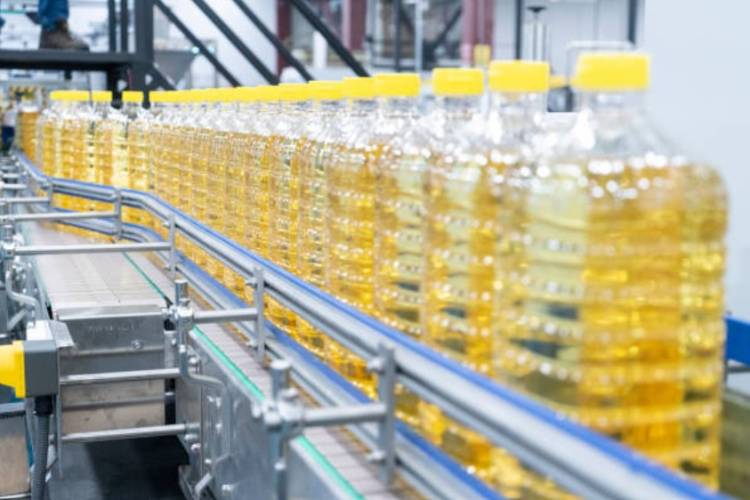
India’s love affair with fried food is legendary, but the country’s edible-oil cupboard is looking alarmingly bare. In April, imports of edible oils plunged 32 per cent to just 0.86 million tonnes, according to the Solvent Extractors’ Association of India. Shipments of both palm and refined oils dried up as global prices firmed while a healthy domestic oilseed crop encouraged importers to wait and watch.
India consumes roughly 25 million tonnes of edible oil a year yet produces little more than 40 per cent of that need. The gap is bridged with palm, soybean and sunflower oils sourced largely from Malaysia, Indonesia, Argentina, Brazil, Russia and Ukraine. Such dependence leaves the kitchen—and the balance of payments—at the mercy of world markets. When global prices spiked this year, retail inflation in edible oils hit 17.4 per cent in April, the sixth consecutive month in double digits.
READ | Weakening AMOC threatens to hasten climate change
The squeeze is felt well beyond the frying pan. An average Indian uses about 19 litres of edible oil annually, and the commodity is a key input for soaps, cosmetics, baked goods and snack foods. When oil prices climb, the entire consumer basket feels the strain.

Palm oil: cheap, ubiquitous—and vulnerable
Palm oil is the workhorse of India’s edible-oil economy: inexpensive, versatile and present in half of the world’s packaged foods and 70 per cent of cosmetics. For decades, Malaysia and Indonesia—together responsible for 85 per cent of global supply—kept Indian shelves stocked. Lately, labour shortages and erratic weather have begun to crimp production, exposing India’s over-reliance on imported palm.
The crunch is already visible. Port and pipeline inventories slid to a five-year low of 1.35 million tonnes on 1 May, after April palm-oil arrivals fell to their weakest level in four years. Traders now expect a rebound in palm and soyoil purchases, a prospect that is already buoying Malaysian palm futures and US soyoil prices.
SEA officials insist the empty pipe should not be mistaken for an immediate shortage. Mustard-seed crushing is running at full tilt, and another 60,000-70,000 tonnes of refined oil arrive duty-free from Nepal each month, cushioning headline supply.
The real squeeze lies in costs: benchmark landed crude palm oil still trades around $1,100 a tonne—well above last year’s levels—while millers can no longer offset margins by selling oil-meals, as livestock producers have switched to cheaper DDGS generated by India’s ethanol boom. With that buffer gone, millers pass the hit straight to shoppers, keeping edible-oil CPI inflation stubbornly above 17 per cent.
Policy whiplash
Processors have urged New Delhi to “canalise” imports through state agencies such as NAFED and NCCF to smooth supply. Yet policy signals have been mixed. Last September, the government hiked import duties on crude palm, soybean and sunflower oils to 27.5 per cent (from 5.5 per cent) and on refined oils to 35.75 per cent (from 13.75 per cent), hoping higher tariffs would spur local production. Predictably, the levy failed to move farmers in the short term but did inflate retail prices.
India is hardly a minnow in oilseeds: it commands 15–20 per cent of the world’s oilseed acreage, though only 6–7 per cent of output. A NITI Aayog study pins the blame on distorted incentives—free power, cheap fertiliser and assured procurement—favouring paddy and wheat. Unless procurement agencies extend similar comfort to oilseed growers, farmers have little reason to switch crops.
The National Mission on Edible Oils
To correct that imbalance, the Centre last year launched the National Mission on Edible Oils–Oilseeds (NMEO-Oilseeds), a seven-year, Rs 10,103-crore push to raise domestic output. Critics note that India has fielded oilseed missions since the 1980s with scant success; the real test will be in execution—better seeds, extension services and assured offtake, not just budgetary outlays.
One proposal is to grow oil palm at home, but the idea is fraught. Plantations are a notorious driver of deforestation in Southeast Asia, and replicating that record would be ecological folly. The government’s own reports recommend using degraded or fallow land rather than carving fresh acreage out of forests or food-crop zones—a sensible compromise if enforced.
Dietary shifts and rising incomes mean India’s edible-oil demand is projected to reach 29.5 million tonnes by 2030 and 40 million tonnes by 2047. Meeting that appetite will require a concerted mix of policies: realigning crop incentives, boosting yields through better varieties and irrigation, expanding processing capacity, and cushioning consumers from price shocks with a transparent, predictable import-duty regime.
For now, though, India’s fry-pan economics remain hostage to distant plantations and volatile futures markets. Until the country sows the seeds of real self-sufficiency, every uptick in Kuala Lumpur or Chicago will ripple straight to dinner tables from Kanyakumari to Kashmir.
